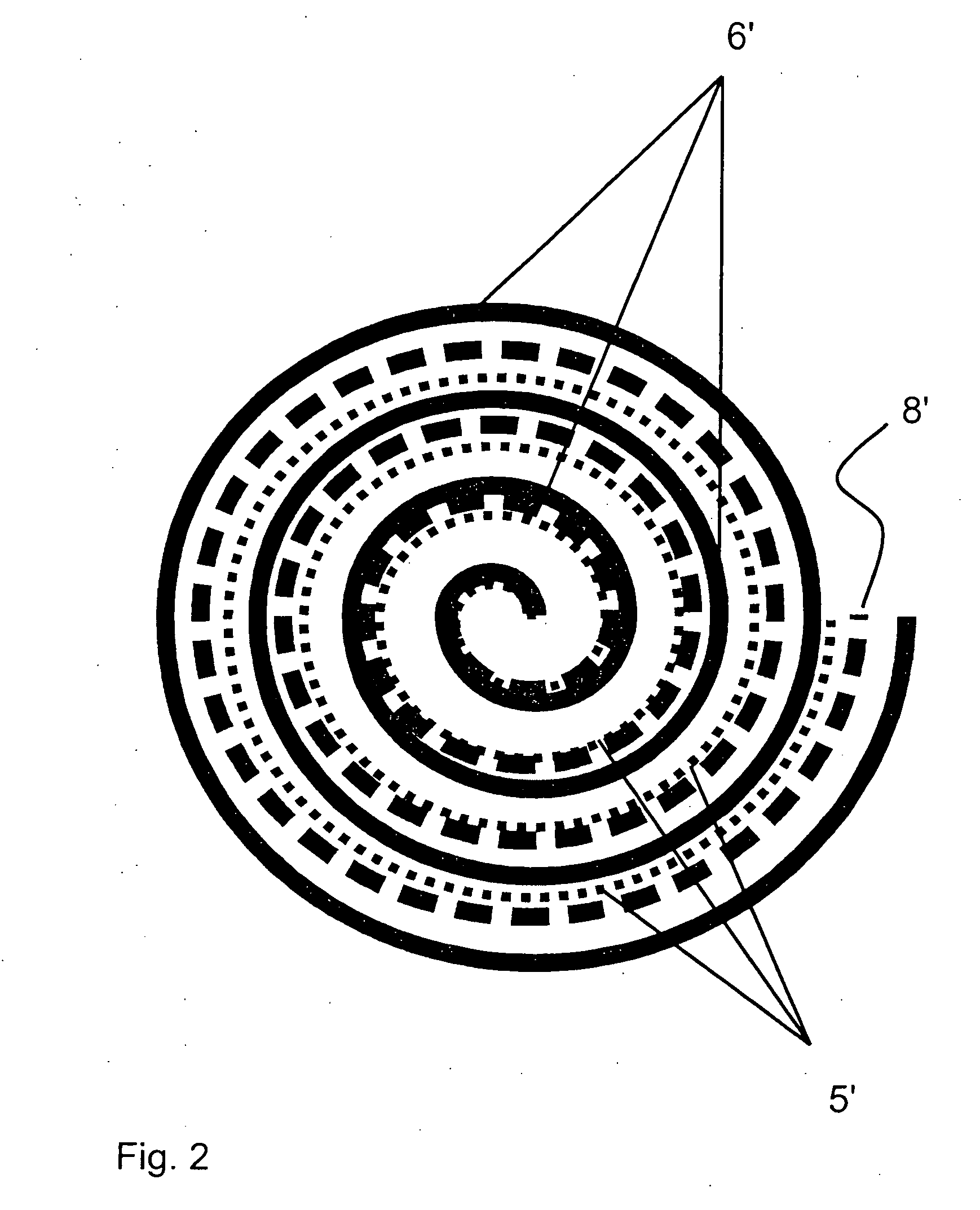Electrochemical sensor
- Summary
- Abstract
- Description
- Claims
- Application Information
AI Technical Summary
Benefits of technology
Problems solved by technology
Method used
Image
Examples
Embodiment Construction
[0036] Referring to the drawings in particular, the embodiment of FIG. 1 is a three-electrode electrochemical sensor according to the present invention comprising a housing 1, in which an opening is closed by a membrane 2, which is open for diffusion and behind which a measuring electrode 3 is located. A reference electrode, which is designed as a “Swiss roll,” structure is arranged in the central area of the electrolyte space 4, the reference electrode containing at least one layer of a material of a reference electrode 5 and a layer of a material of a protective electrode 6, the two materials being rolled around each other and the material of the protective electrode 6 closing off the overall arrangement to the outside and toward the electrolyte space 4. A counterelectrode or auxiliary electrode 7 is arranged on the side of the sensor housing 1 facing away from the measuring electrode 3. Layers of nonwoven material 8 are arranged between the layers of the material of the reference...
PUM
 Login to View More
Login to View More Abstract
Description
Claims
Application Information
 Login to View More
Login to View More - R&D
- Intellectual Property
- Life Sciences
- Materials
- Tech Scout
- Unparalleled Data Quality
- Higher Quality Content
- 60% Fewer Hallucinations
Browse by: Latest US Patents, China's latest patents, Technical Efficacy Thesaurus, Application Domain, Technology Topic, Popular Technical Reports.
© 2025 PatSnap. All rights reserved.Legal|Privacy policy|Modern Slavery Act Transparency Statement|Sitemap|About US| Contact US: help@patsnap.com



